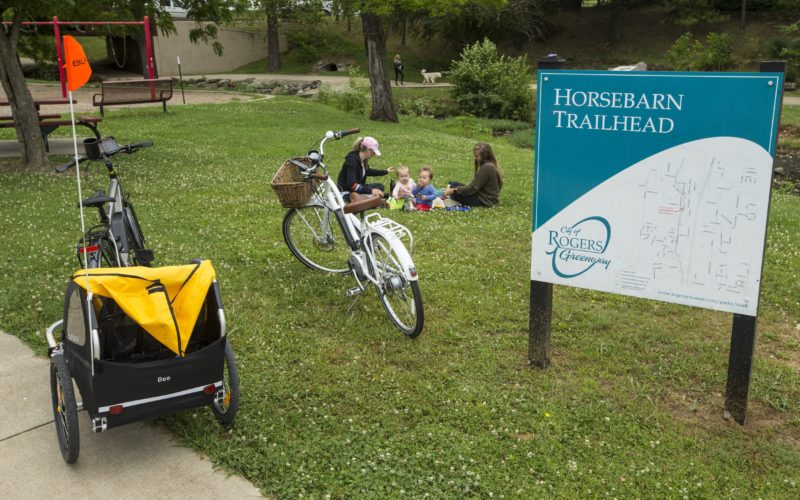Bicycles great for recreation, transportation
AMANDA BANCROFT
Making Ripples
Cycling the Razorback Greenway seems particularly popular right now as people try to avoid crowded indoor venues and enjoy safer outside activities. As the cooler autumn weather arrives and brings with it a colorful palette for the foliage, bicycles — and their relatives, scooters — will probably become even more of a go-to for both transportation and recreation.
When feasible, bicycle commuting is a cheaper alternative to driving and a safer alternative to carpooling. Even those who work from home will need to buy groceries and supplies occasionally, and bicycles might be a good way to squeeze in a workout or have fun during an otherwise monotonous or stressful errand. For many people, it’s a way to burn off the extra pounds they gained during quarantine. It’s also a great way to burn off anxiety or stress, improve circulation to the brain for better productivity at work, and benefits the environment while the rider benefits from the environment. Who doesn’t love to see luscious green landscapes and a deep blue sky while the breeze blows through our clothes?
Not driving a car in Fayetteville saved us approximately $850 in 2013 — the only year of data I could find from our past car-free years — and it was a big contribution to our leg muscles. If a standard two-wheel bicycle doesn’t seem right for you, try various other options. Some bikes are designed for seniors and those with disabilities, and some can help you haul a lot of stuff or even a lot of kids! Add a bike trailer, handlebar basket or bike rack to do grocery shopping, laundry or get books from the library.
But many families live too remotely. Attaching a bike rack to the car gets the bicycle to a safe place to start your commute. This may save you money on parking, too. It isn’t necessary to be perfect — exercise, reduced gas emissions and other benefits are obtained even if you have to drive part of the way.
Afraid of arriving to work sweaty? No problem. Bring along a change of clothes and freshen up with a lavender deodorant wipe once you arrive (allow extra time before your shift begins). Not wearing a backpack helps reduce sweat, too.
Dress comfortably and appropriately for the weather during your ride. Plenty of people worldwide bike in the rain, heat or snow and consider it healthy and normal. Plan ahead and pack whatever you might need. Some possibilities include sunglasses, extra socks, rain gear and a water bottle. Prepare for things to sometimes be unpleasant — you may get bug bites, sunburn or soaked from the rain. Errands or commuting might take longer than driving (depending on traffic and parking spots). Be aware of proximity to joggers and others on the trail who may be asymptomatic carriers of the virus and follow up-to-date science-based health guidelines.
If you’re entrepreneurial, you might use your bicycle to promote your business in some artistic way, or your bike might be your business! Pedicab companies exist throughout the country, and although there are legal hurdles to overcome that vary by location, it may be a good business model for your situation. Whether you bike for pleasure or work, it’s just one more way to make a difference for people and planet, and the choice is yours.
Amanda Bancroft is a writer, artist, and naturalist living in an off-grid tiny house on Kessler Mountain. She and her husband Ryan blog about their adventures and offer tips to those wanting to make a difference at www.RipplesBlog.org.










